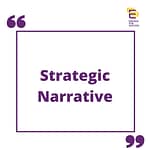Disappointing statistics about CEOs
While I was writing The Code for New Leaders; how to hit the ground running in days not weeks, I came across the Edelman Group – the world’s largest PR organisation.
organisation.
Edelman undertakes an annual global trust survey – the Edelman Trust Barometer and the results are illuminating. Not only did I discover that in 2014, technology companies are the most trusted businesses and financial services are the least trusted, but I also found that the Edelman research had revealed disappointing statistics about CEOs.
In their 2014 survey, Edelman found that CEOs are less trusted as spokespeople than their own employees. Their response to this finding is to suggest that the CEO has a role to play in becoming the Chief Engagement Officer – using their leadership position to build engagement, rapport, connection, trust and belief between their companies and their clients, customers and other stakeholders.
CEOs becoming the champions and advocates of engagement makes sense. After all, they are in a perfect position to encourage such connection and to drive through the change. Yet, my own findings show that few CEOs spend enough time engaging their employees.
What CEOs do well
They set the vision and strategy; any company is dead without that. They aim to ensure that their company excels at operations and execution; an organisation that doesn’t deliver, doesn’t survive. They network and connect and promote across external customers, and with shareholders and stakeholders: successful companies need presence, profile and market position.
CEOs even encourage performance development, succession planning and career development across their company, but they are not kings and queens of engagement. They regularly miss the fact that even well-paid, well- trained, well-positioned employees will feel disengaged if they don’t know why they are doing something, what value it brings and how their personal input and connection makes a positive difference.
Poor Scores
Recently, I presented a keynote at an internal client conference with fifty front-line employees and was witness to a discussion on the latest employee engagement survey. The CEO was disgusted with the poor scores and the negative comments about his beloved company. When I asked him about the EES report, he almost snorted. “We give these guys everything; higher-than average pay, ongoing, personal development excellent promotional opportunities, fantastic bonuses and they repay us with these whinges. This is a great place to work and they don’t seem to get that.
We should fire them for 3 months, let them find out what the world is like outside and then take them back; they’d soon change their minds!” His comments are not unusual, and he is correct. His organisation is a true beacon of support an opportunity for its employees, and it treats its employees in a fair and just manner. Heck, I’d love to work there! But the true fact of the matter is that this CEO hasn’t learned about engagement. He doesn’t understand that you can give a worker everything, but if they don’t feel engaged, they don’t feel good. At best, they will whinge. At worst, they will vote with their feet: the high performers will simply leave, and the low performers who can’t get another job will stop trying their hardest and doing their best.
A Framework for Engagement
The best CEOs understand that they need to design a working environment which provides a framework for engagement. This would include explaining clear goals and values to employees in a way that they can understand and connect with. It also includes describing how what each employee does is valuable and important and makes a real difference to the company, other employees and customers. And it would also include activities to build loyalty and connection with the organisation so that people feel personally involved and connected, and will therefore make additional, discretionary effort – going the extra mile – to help the company continue to grow and prosper, to the benefit of all concerned.
Without that, the unhelpful ping pong continues. Employees feel disempowered, disconnected and grumbly – and senior leaders get more and more frustrated and irritated by the lack of positive response from workers who should be delighted to work hard for the organisation. This amounts to a marriage made in hell which more often than not ends in divorce.
David Macleod – one of the founders of Engage for Success – says that engagement is “… about how we create the conditions in which employees offer more of their capability and potential”. Too right. My experience with developing leaders is all about encouraging them to create the right kind of environment to maximise staff capability, participation and engagement. Leaders will only be successful and business productivity will only be maximised when their employees are truly engaged
CEOs need to treat staff engagement as a must-do and they need to act immediately. Senior managers and new leaders need to act too; they don’t have to wait until they’re at the top of the business. In fact, anyone in a leadership position can start now. After all, leadership is always about putting people before products, services, strategy or productivity. Get the people engagement bit right and business success is much more likely to follow.
Author Bio:
Henry Rose Lee has been coaching and advising senior leaders in multinational corporations, global groups and national companies for more than a decade. Her special interest lies in new leaders and in particular, the specific challenges facing Gen Y rising stars. Henry Rose Lee can be contacted on Linked
Image courtesy of stock images / FreeDigitalPhotos.net




